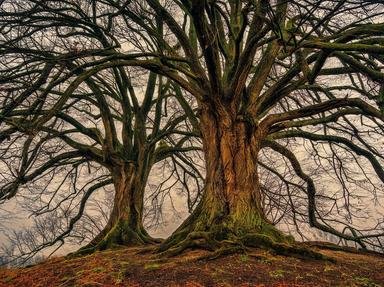Quiz Answer Key and Fun Facts
1. Sam Raimi ("Spider-Man") manages to sneak in several consistent 'signatures' in the films he directs, including cameos by "The Classic". What might "The Classic" be?
2. A 'running gag' that can be seen or heard in most of John Landis' ("An American Werewolf in London") films is a phrase that can also be considered an indirect tribute to Stanley Kubrick's acclaimed "2001: A Space Odyssey". Which phrase would apply?
3. Quentin Tarantino ("Reservoir Dogs") created two fictitious products that are featured in many of his films. Hit man Jules Winnfield (Samuel L. Jackson) gives the 'Big Kahuna Burger' his seal of approval in "Pulp Fiction" ("That is a TASTY burger."). Which of the following is another Tarantino 'brand'?
4. Which of the following group of letters and numbers (in various combinations) will you see or hear in numerous films directed or produced by George Lucas ("Star Wars"), as a tribute to one of his earlier works?
5. In John Hughes' classic 1986 comedy "Ferris Bueller's Day Off", the vanity plates on several of the cars in the film display abbreviations such as "TBC", "MMOM", "VCTN" and "4FBDO". Which of the following directors do these license plates pay a subtle tribute to?
6. While filming "The Godfather" trilogy, it became evident that Francis Ford Coppola made use of a certain fruit, as well as its corresponding color, to symbolize violence, death or an upcoming death-related situation. What fruit and color did Coppola repeatedly use?
7. Directors aren't limited to just props or themes; some will use their actors to 'project' a certain facial expression in such a way that the expression itself becomes an identifiable 'signature'. One particular director is usually singled out for using this technique, as evidenced by the talents (along with the year of film release) of Keir Dullea (1968), Malcolm McDowell (1971), Jack Nicholson (1980) and Vincent D'Onofrio (1987), among others. What is this technique's nickname?
8. Even film studios can have their own 'signature'. Which fast-food 'franchise' has been referenced in one way or another in many films made by the CGI animation studio Pixar ("Finding Nemo")?
9. Academy Award-winning sound designer Ben Burtt ("Raiders of the Lost Ark") has included a particular sound effect (which was first heard by moviegoers in 1951) in many of the films he has been involved with. What name did Burtt give this effect, which is usually used when a character is suffering from great pain or distress?
10. Taking a cue from Alfred Hitchcock (the Master of signature cameos), this director is known for 'sneaking' into his own pictures from time to time himself. However, being the 'goodfella' that he is, he also manages quite often to cast family members into his films as well. Who am I referring to?
Source: Author
doorsfan58
This quiz was reviewed by FunTrivia editor
jmorrow before going online.
Any errors found in FunTrivia content are routinely corrected through our feedback system.
